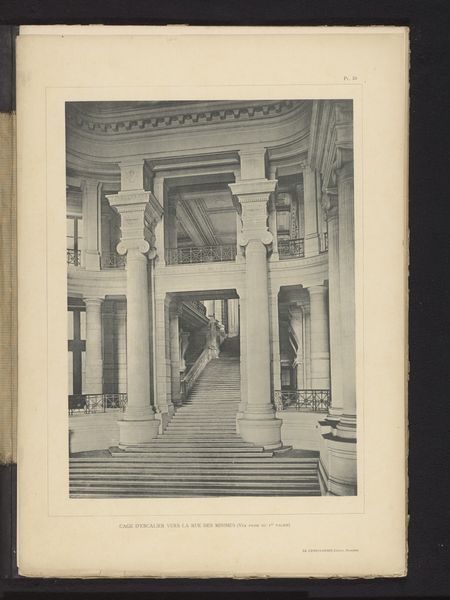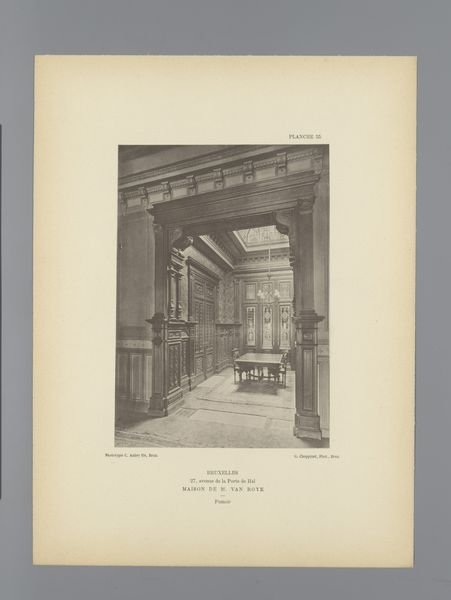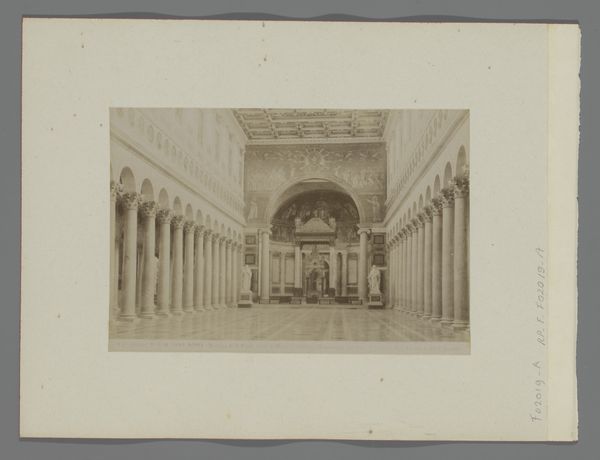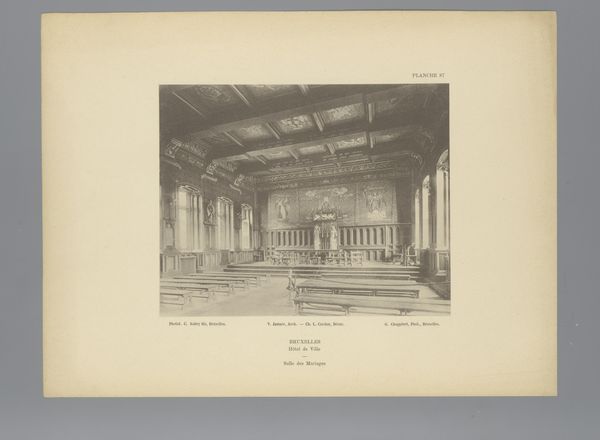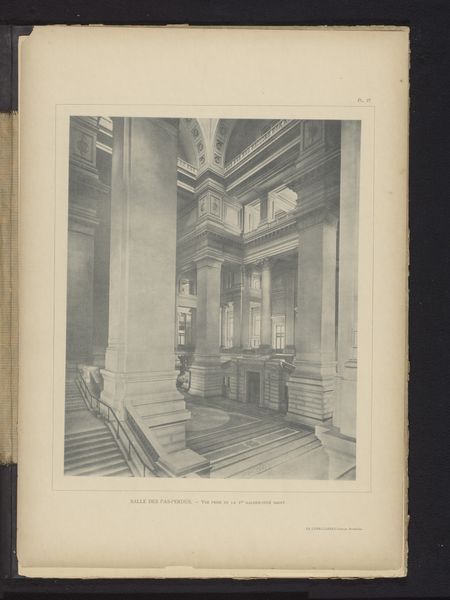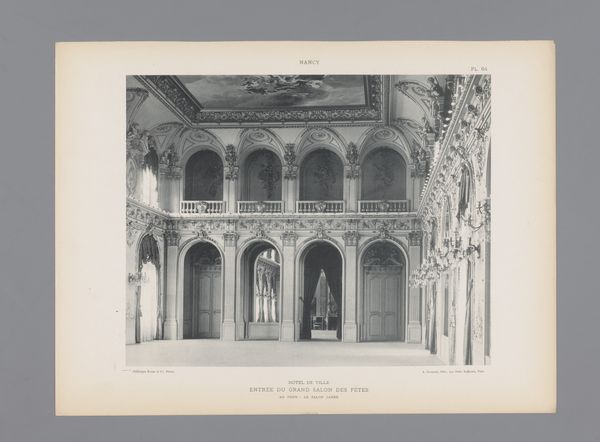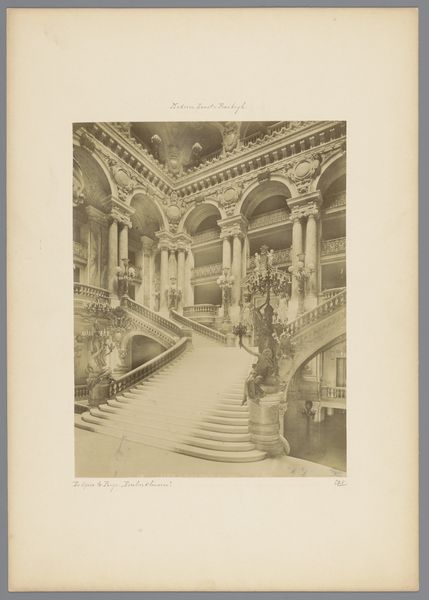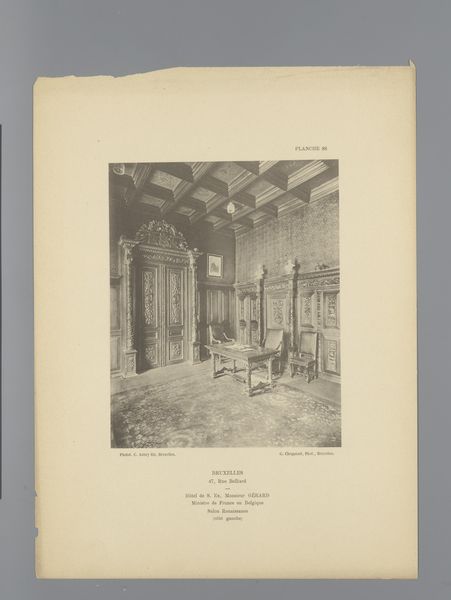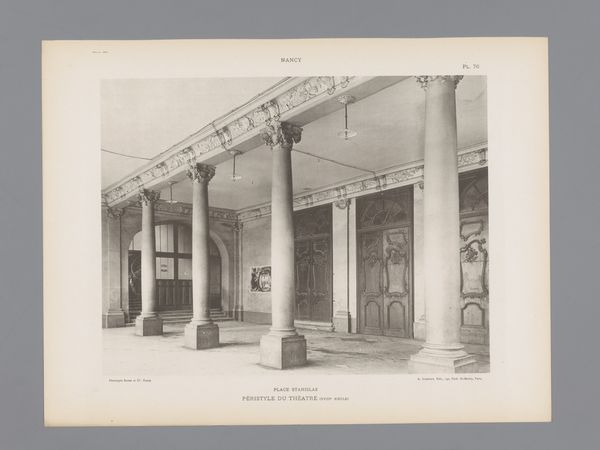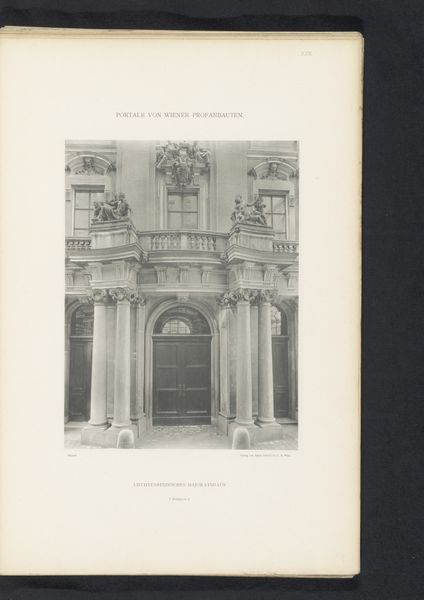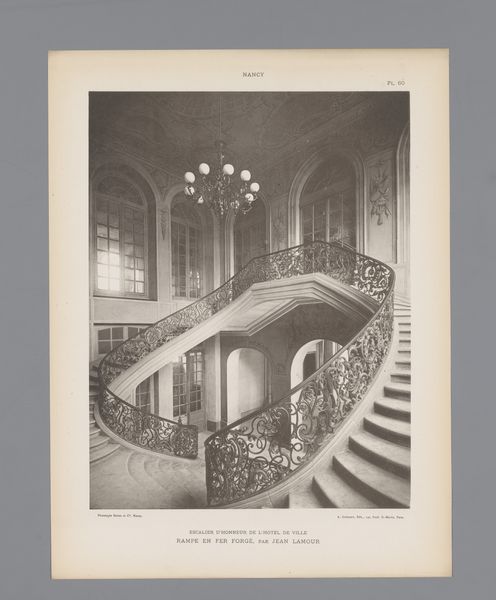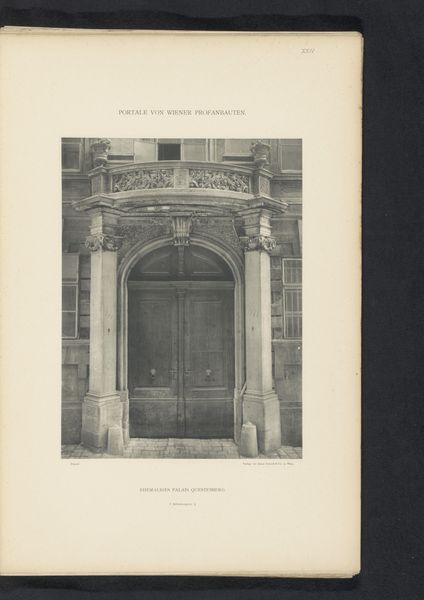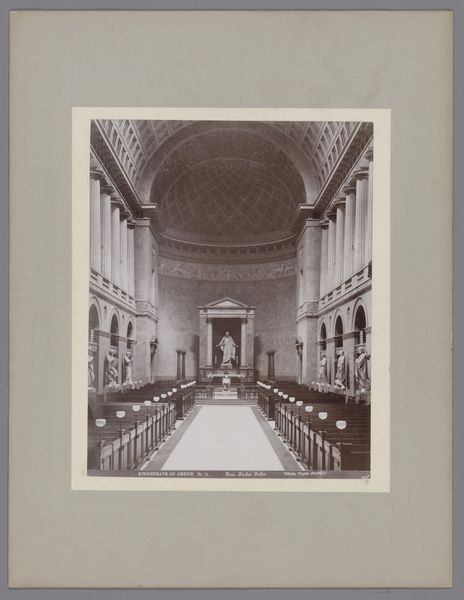
print, etching, photography
# print
#
etching
#
landscape
#
perspective
#
photography
#
cityscape
#
realism
Dimensions: height 298 mm, width 401 mm
Copyright: Rijks Museum: Open Domain
Curator: Welcome, everyone. We're looking at an etching titled "Hall met de grote trap in het stadhuis te Nancy," which translates to "Hall with the grand staircase in the town hall of Nancy." It dates to before 1896. Editor: It's imposing, isn't it? The sheer number of columns marching off into the distance creates a powerful sense of perspective. There's also an airlessness to the image, as if no one actually walks through this grand hall. Curator: Indeed. The town hall itself, a symbol of civic power and bourgeois aspirations, had to present a carefully controlled image. Etchings and photographic reproductions like these played a significant role in disseminating and solidifying those images for public consumption. The question becomes, what’s included and what’s not. Editor: I'm drawn to the material reality represented here – the stone, presumably marble or some polished variant. Imagine the labor involved in quarrying, transporting, carving, and polishing those columns! We should also think about who benefits and who is employed here; are these skilled artists making sculptures and carvings, or day-wage laborers following very specific guidelines? Curator: That's a fantastic point. The town hall was deliberately designed to embody ideals of the Republic, a conscious decision after the Franco-Prussian War. The art and architecture served to rebuild morale, displaying a vision of French strength. It uses a lot of classical architectural motifs which are then reworked with local artisanal skill. Editor: So this artwork becomes a marketing tool for those ideologies and skills, even in reproductive prints. How accessible would the construction of this city hall have been, I wonder? We’re seeing the final pristine image, but behind that, there must have been huge teams of people with many different trades. Curator: Precisely. It’s also important to consider the original viewers of the prints. Were they meant for everyday citizens or rather circulated amongst a specific elite— government officials, architects, and wealthy patrons? The framing and choice of subject suggests a desired narrative about the virtues and sophistication of local government. Editor: It makes me think about what civic architecture communicates, then and now. The means of production and consumption might evolve, but this power of the building material is still present in many political buildings today. Curator: Thank you for pointing that out. It really forces one to consider how power and representation are always entwined within cityscapes. Editor: Agreed. There is definitely much more to it than just meets the eye.
Comments
No comments
Be the first to comment and join the conversation on the ultimate creative platform.
